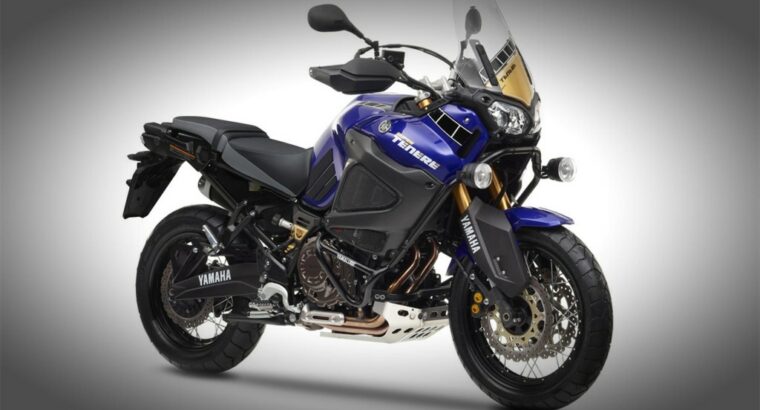Dual Sport, Adventure, Or Enduro: Unraveling The Off-Road Bike Differences
In a world filled with endless possibilities for off-road exploration, the choice of a suitable bike becomes a crucial decision.
The realm of off-road biking is divided into three distinct categories: dual sport, adventure, and enduro. These bikes, with their unique characteristics and capabilities, cater to the adventurous spirit and diverse needs of riders.
Unraveling the differences between these off-road machines is akin to peeling back layers of a captivating mystery. This article delves into the intricacies of dual sport, adventure, and enduro bikes, shedding light on their distinct features, functions, and evolution.
By understanding the nuances of each category, riders can make informed decisions that align with their off-road aspirations. So, prepare to embark on a journey of knowledge as we explore the world of dual sport, adventure, and enduro bikes, unraveling the mysteries behind their off-road prowess.
Key Takeaways
- Dual sport bikes are designed for both off-road and on-road riding, with a focus on off-road performance.
- Adventure bikes are primarily designed for long-distance riding, with better on-road capabilities and added features for comfort.
- The evolution of adventure bikes has led to a focus on styling and ergonomics, with some models not suitable for off-road use.
- Enduro bikes are designed for both on-road and off-road riding, with a balance between off-road performance and on-road comfort.
Types of Bikes
There are three main types of off-road bikes: dual sport bikes, adventure bikes, and enduro bikes, each with their own distinct characteristics and intended uses.
Dual sport bikes are designed to be comfortable both on and off-road, with a focus on off-road performance. They have a lightweight design, a single cylinder engine with a displacement of 250cc-650cc, and minimal body parts. While they lack some features for long-distance, paved riding, they excel in off-road conditions with high ground clearance, spoked wheels, and low-speed gearing.
Adventure bikes, on the other hand, are designed for long-distance riding with off-road capabilities. They have larger engine displacement, padded seats, windshields, and luggage systems. Despite their durability and larger gas tanks, they can be heavier and have limited body position options.
Lastly, enduro bikes are designed for both on-road and off-road riding, with features that cater to both environments.
Some popular models of dual sport bikes include the Honda CRF250L and the Kawasaki KLR650, while adventure bikes like the BMW R1200GS and the Yamaha Super Tenere are widely known.
Main Differences
Evolved from the need for a long-distance and off-road capable vehicle, adventure bikes offer larger engine displacement, high ground clearance, and tires designed for pavement, while dual sport bikes prioritize off-road performance with a lightweight build, spoked wheels, and high ground clearance for low-speed trail riding.
Adventure bikes are equipped with key features and capabilities such as a padded seat, luggage system, windscreen, and higher gear ratio for highway speeds. They are designed to provide durability, better braking, and a larger gas tank for long-distance riding.
On the other hand, dual sport bikes are lightweight, street legal, and tough off-road machines that require little maintenance.
Choosing the right off-road bike depends on your needs – if you are looking for a versatile bike that can handle both on-road and off-road conditions, an adventure bike is a suitable choice. However, if you prioritize off-road performance and prefer a lightweight and agile machine, a dual sport bike would be more appropriate.
Evolution and Trends
The evolution of off-road vehicles has led to the development of rugged-looking vehicles that prioritize styling and seating position, catering to the preferences of adventure bike owners.
The evolution of off-road bikes can be traced back to the need for dedicated off-road vehicles, which were then modified with accessories to make them more road-worthy. However, consumers began to prefer vehicles that had a rugged appearance but were primarily suitable for on-road use. This led to the emergence of adventure bikes, which focused on styling and ergonomics rather than off-road capabilities.
In recent years, there has been a trend towards adventure bikes that are not suitable for off-road use, also known as ‘faux by fours.’ This trend is similar to the evolution of SUVs, as adventure bike owners prioritize durability and a rugged appeal, even if they have limited trail capabilities.
Frequently Asked Questions
Are dual sport bikes street legal?
Dual sport bikes can be made street legal with the necessary modifications. Pros of riding a dual sport bike on the street include their lightweight and toughness off-road. Cons include limited top speed and lack of windscreen. Modifications for better street performance can include adding a windscreen and improving suspension.
What is the average weight of an adventure bike?
The average weight of an adventure bike ranges from approximately 450 to 600 pounds. These bikes are designed for long-distance travel off-road and have performance features such as high ground clearance, long suspension travel, and a luggage system.
Can enduro bikes be used for long-distance touring?
Enduro bikes are capable of long-distance touring due to their design for both on-road and off-road riding. They offer advantages such as durability, larger gas tanks, and a rugged appeal that is less affected by dents and scratches.
Which type of bike is better for off-road racing?
When it comes to off-road racing, the best type of bike would be a modified enduro bike. These bikes are specifically designed for both on-road and off-road riding, and with the right modifications and off-road racing techniques, they can excel in the rugged and challenging conditions of off-road racing.
What are the maintenance requirements for an adventure bike?
Maintenance schedules for adventure bikes vary depending on the manufacturer’s recommendations and usage. Regular maintenance tasks include oil changes, chain adjustments, brake inspections, and tire checks. Basic tools such as wrenches, screwdrivers, and a torque wrench are typically needed for these tasks.
